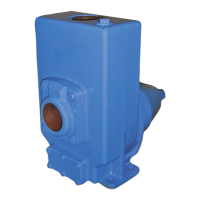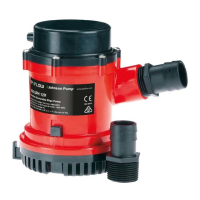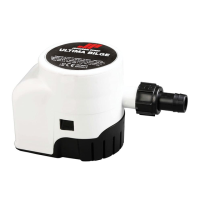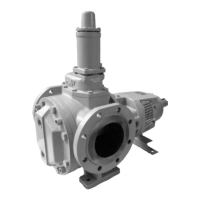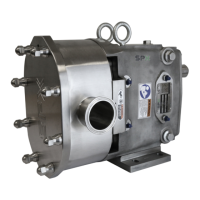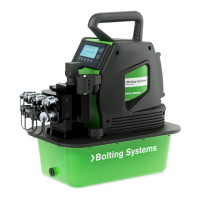Waukesha Cherry-Burrell
®
Brand Universal 3 Pump Maintenance
11/2018 95-03103 Page 33
Cleaning Determine the pump cleaning schedule on-site for materials
being processed and plant maintenance schedule.
To disassemble the fluid head, see
“Fluid Head Disassembly -
Cover and Rotors” on page 34. Remove and clean the cover O-
ring, pump seals, and the rotor nut assembly. Inspect and replace
them as necessary.
NOTE: Always replace the rotor nut O-rings and product-side
seal O-rings when reassembling the pump. If the area behind
these seals becomes soiled, contact SPX FLOW Application
Engineering for a specific cleaning and sanitizing procedure
validated to remove bacteria. If a chlorine solution (200 ppm
available chlorine) is used, it should leave no residual deposits
which would remain in the pump.
Acid cleaners have a much higher metal corrosion rate and pump
parts should remain in acid cleaning solutions no longer than
necessary. Any strong inorganic mineral-based acids that are
harmful to your hands would be harmful to pump parts. See
“Stainless Steel Corrosion” on page 11.
In applications where material can harden in the pump during
shutdown, a CIP cleaning, flush, or disassembly of the fluid head
and manual cleaning is strongly recommended. See “CIP (Clean-
In-Place) Design” on page 22.
Every 3
months
Gear backlash. Lack of lubrication.
Excessive hydraulic loads.
Loose gear locknuts.
Worn gear teeth.
Check lubrication level and frequency.
Reduce hydraulic loads.
Torque locknuts to specified torque
values. See “Torque Values” on page 93.
Check and replace gears if necessary.
Every 3
months
Worn or broken
gear teeth.
Lack of lubrication.
Excessive hydraulic loads.
Loose gear locknuts.
Check lubrication level and frequency.
Reduce hydraulic loads.
Torque locknuts to specified torque
values. See “Torque Values” on page 93.
Check and replace gears if necessary.
Every 3
months
Loose gears. Gear locknuts not torqued
properly.
Locking assembly not torqued
properly.
Worn gear key.
Torque gear nut to specified torque value.
See “Torque Values” on page 93.
Check and replace gears if necessary.
Inspect gear key, shaft keyway and shaft,
replace if necessary.
Every 3
months
Loose bearings,
axially or
radially.
Lack of lubrication.
Excessive hydraulic loads.
Product or water contamination.
Check lubrication level and frequency.
Reduce hydraulic loads.
Ensure no excess grease build-up.
Replace bearings if necessary.
Frequency Check for Possible Causes Possible Solutions
